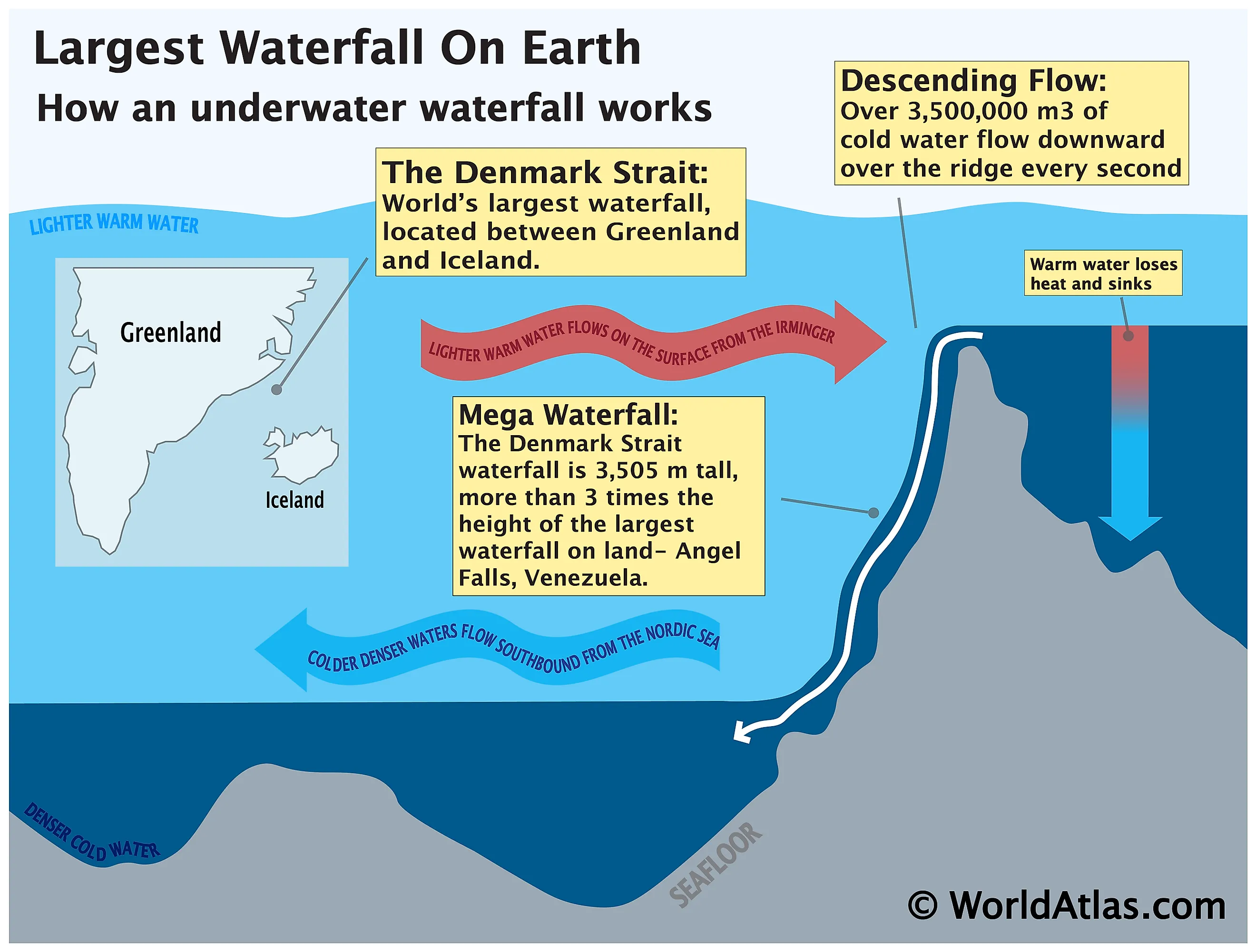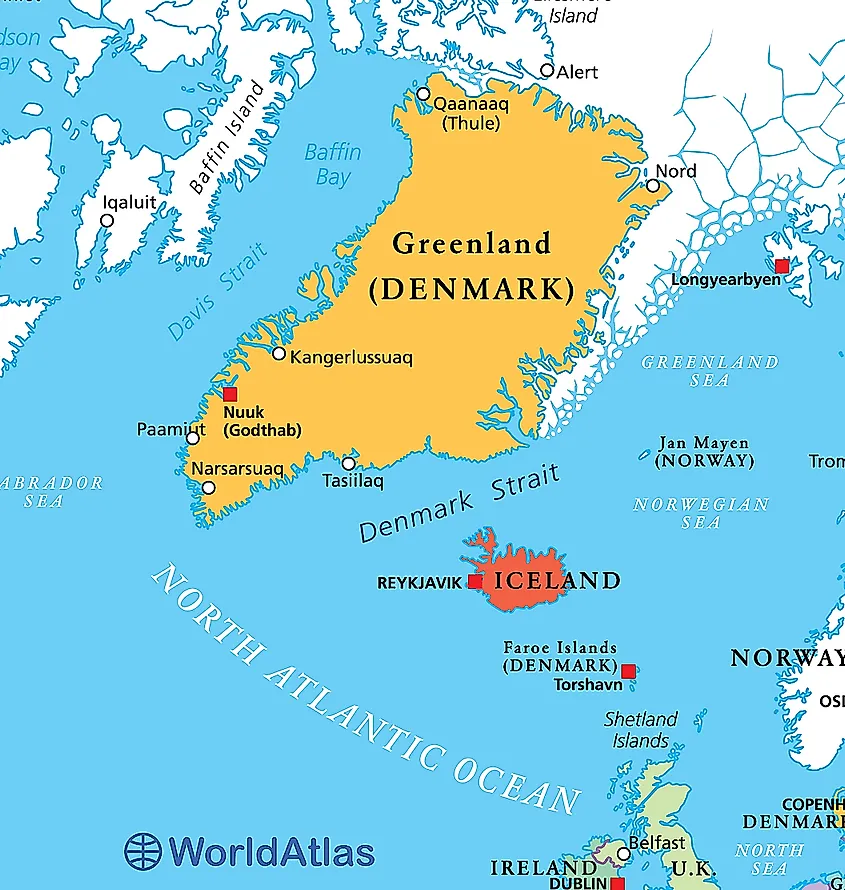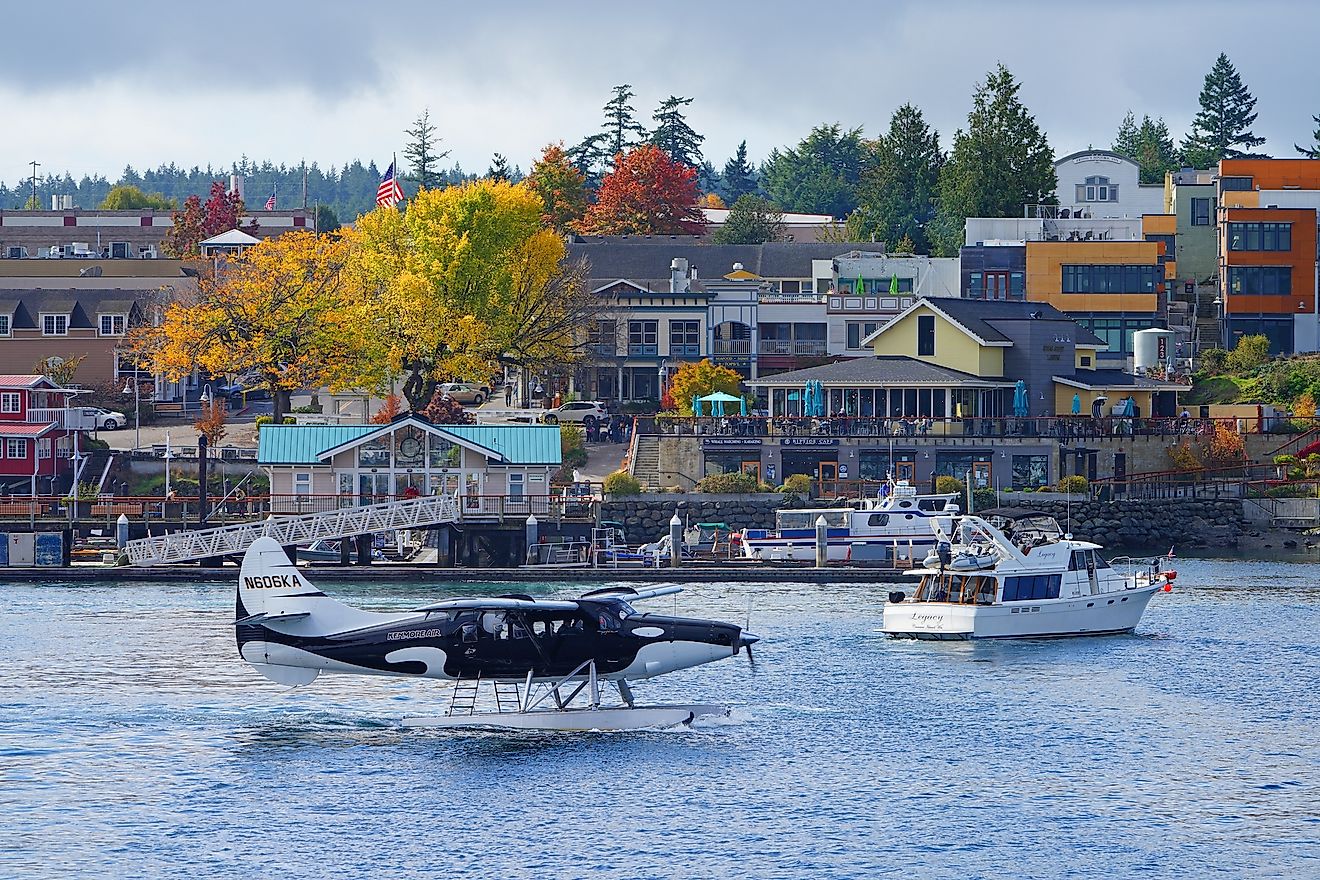
Where Is The World's Largest Waterfall?
Waterfalls can be found all over the world. They come in all sorts of sizes and shapes, from the fast moving to the tricklingly slow. Some have vast amounts of water, while some are known for their height, so categorizing the best or greatest depends on your criteria.
So what is the ‘largest’ waterfall? Surprisingly, it is not on land at all, but located underwater, below the ocean’s surface. Though they are rarely seen, and indeed many people may not even realize they exist, underwater waterfalls are not only present, but are some of the largest waterfalls on the planet. This, the largest, is known as the Denmark Strait waterfall, and it can be found in the deep waters below the Strait of Denmark. Underwater waterfalls tend to be grand and powerful in nature. Instead of tumbling over cliffs or gorges, these waterways fall over cataracts below the ocean’s surface.
Location

The Denmark Strait separates the island country of Iceland from the island of Greenland (a part of the Kingdom of Denmark). Also known as the Greenland Strait, it links the Greenland Sea, a part of the Arctic Ocean, to the Irminger Sea, which is in the Atlantic. This oceanic strait connects Greenland to the northwest and Iceland to the south east, and runs for 480 km. The strait contains various cataracts. These cataracts, or ridges, start roughly 610 m below the ocean’s surface and drop down to 3050 m.
Underwater Waterfalls

The thought of an underwater waterfall may seem impossible. How can water ‘fall’ within a larger body of water? While of course the waterfall is not exactly falling over a cliff edge or into the open air, underwater phenomena like this do exist. The trick is in the temperature, and therefore density of the water. The Strait of Denmark is home to such a vast waterfall due to drastic changes in temperature in the area. Extremely cold currents from the Nordic sea travel through the strait in a southward motion, where they encounter the warm water of the Irminger sea. Colder water is denser than warm water, and so these cold currents sink, or fall, under the warmer water. In areas where the sea floor drops away, such as the cataracts, the cold streams fall quickly over the edge of this underwater cliff. This motion creates a waterfall-like downward flow of water, despite being surrounded by other sea water.
Size
Nearly 3,500,000 m3 of cold current falls over the cataract edge per second. Niagara Falls, one of the natural wonders of the world and also one of the most impressive waterfalls on earth in terms of sheer volume, experiences 2,000 times less water flow than the Denmark Strait Waterfall. The height of the cataract, or drop on the seafloor, is 3,505 m tall. Comparatively, the tallest waterfall on land is known as Angel Falls in Venezuela, and measures only 979 m tall. This means the Denmark Strait waterfall is more than three times the height of any falls on land. This, combined with the sheer force and amount of water that rushes over the fall edge each second makes the Denmark Strait both a remarkable natural phenomenon, but also the largest waterfall on Earth.
The Unknown World Of The Deep Sea
There is so much yet to be discovered below the surface of that ocean, and natural phenomena like the Denmark Strait are indicators of that. Much as the deepest sea trench is exponentially larger than the tallest peak on land, these cascades and waterfalls are much larger and more powerful than their counterparts on land. The Denmark Strait waterfall, like many ocean landmarks, are signs of the wondrous and vast world beneath the sea, which scientists and researchers hope to further explore. What other amazing discoveries might be out there?











